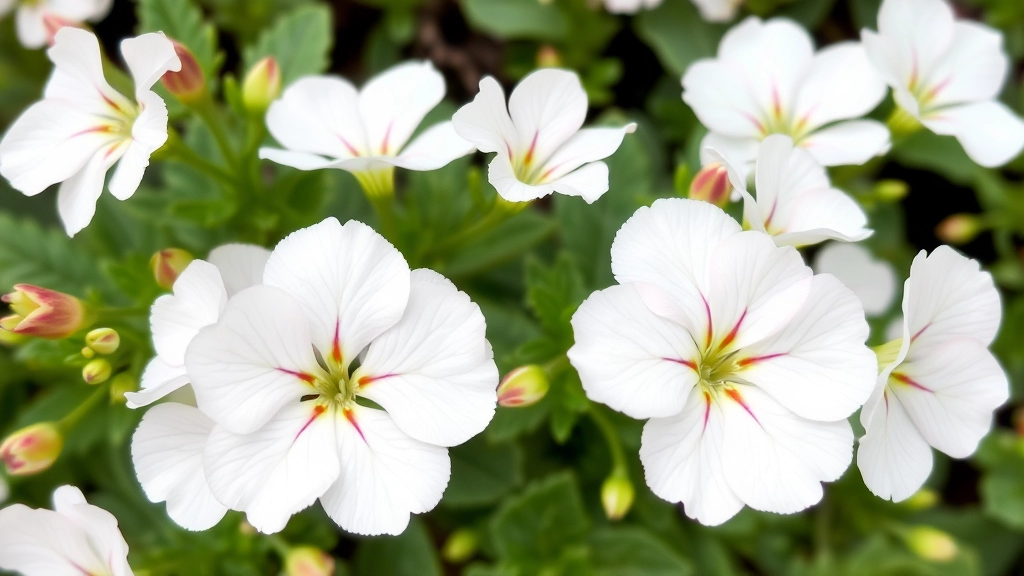Florist Kalanchoe White
A Stunning Variety
Florist Kalanchoe White, a stunning variety of Kalanchoe blossfeldiana, is a favourite among plant enthusiasts for its beautiful, long-lasting white blooms. In this guide, I’ll walk you through everything you need to know about caring for this lovely succulent, from choosing the best soil mix to ideal lighting conditions and watering schedules.
Care Essentials
Whether you’re looking to maintain its health, encourage re-blooming, or simply use it as an ornamental addition to your home or garden, I’ve got you covered. Let’s dive into the essentials of keeping your Florist Kalanchoe White thriving and vibrant.
Have you ever wondered what makes Florist Kalanchoe White such a popular choice for indoor plants?
This stunning succulent boasts clusters of delicate white flowers that bloom profusely, making it a favourite for both home decor and gifting.
### Characteristics of Florist Kalanchoe White
– **Scientific Name**: Kalanchoe blossfeldiana
– **Family**: Crassulaceae
– **Growth Habit**: Compact and bushy
– **Height**: Typically reaches around 30 to 45 cm
Florist Kalanchoe White is not just a pretty face; it is known for its resilience and ease of care.
This plant thrives in a variety of conditions, making it suitable for both novice and experienced gardeners.
### Why Choose Florist Kalanchoe White?
– **Long-Lasting Blooms**: The flowers can last for weeks, adding a touch of elegance to your space.
– **Low Maintenance**: Ideal for those who may not have a green thumb.
– **Versatile**: Perfect for indoor pots, outdoor gardens, or as part of floral arrangements.
For more detailed care instructions, you can refer to our [Florist Kalanchoe Propagation Guide](https://planthq.org/florist-kalanchoe-propagation-guide-stepbystep-methods/) and learn why your [Florist Kalanchoe may not be flowering](https://planthq.org/why-your-florist-kalanchoe-is-not-flowering-solutions-and-tips/).
Best Soil Mix for Florist Kalanchoe White
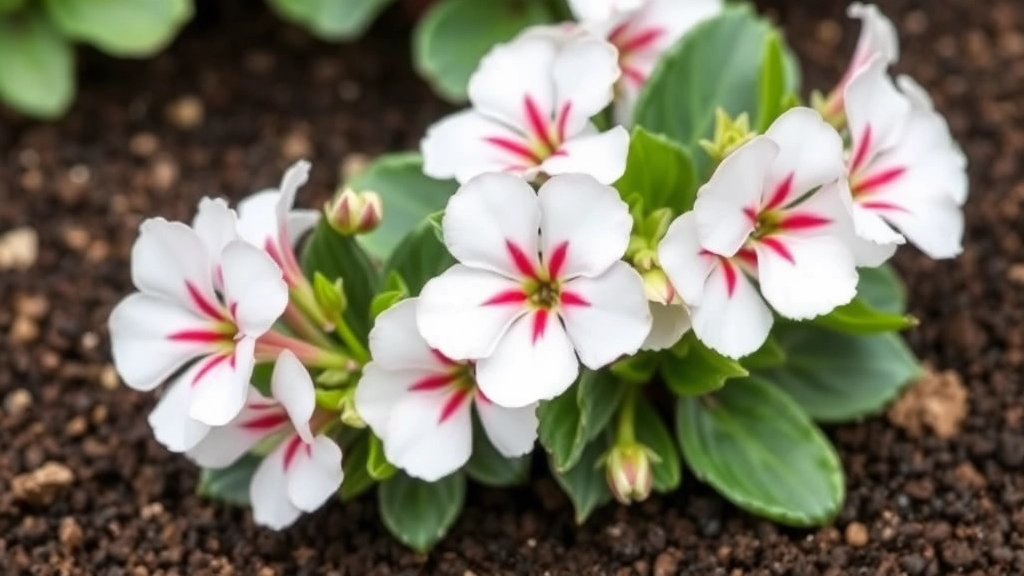
So, you’ve got your beautiful Florist Kalanchoe White, and now you’re wondering what kind of soil it needs to thrive.
Choosing the right soil mix is crucial for keeping your Kalanchoe happy and healthy.
A Good Soil Mix: What to Look For
- Well-Draining: Kalanchoe doesn’t like soggy roots. You want a mix that allows excess water to escape quickly.
- Cactus or Succulent Mix: A pre-made cactus or succulent soil works wonders. These mixes are designed to facilitate drainage.
- DIY Option: If you’re feeling crafty, mix:
- 2 parts potting soil
- 1 part perlite or coarse sand
- 1 part orchid bark
- pH Level: Aim for a slightly acidic to neutral pH (around 6.0 to 7.0). This helps the plant absorb nutrients better.
Why Soil Matters
Using the right soil mix not only helps with drainage but also provides essential nutrients.
A good soil mix can prevent root rot and other issues that can arise from poor drainage.
Ideal Lighting Conditions for Healthy Growth
When it comes to nurturing your Florist Kalanchoe White, one of the most pressing concerns is ensuring it receives the right amount of light. Are you worried about your plant becoming leggy or failing to bloom? The lighting conditions can make all the difference.
Understanding Light Requirements
Florist Kalanchoe White thrives in bright, indirect sunlight. Here are some key points to consider:
- Direct Sunlight: While it can tolerate some direct sunlight, too much can scorch the leaves. Aim for about 4-6 hours of morning sun.
- Artificial Lighting: If natural light is limited, consider using grow lights. Position them about 12-18 inches above the plant.
- Rotation: Rotate your plant every few weeks to ensure even growth and exposure to light.
Signs of Inadequate Light
Keep an eye out for these indicators that your Kalanchoe may not be getting enough light:
- Leggy Growth: Stretched stems with sparse leaves indicate insufficient light.
- Yellowing Leaves: This can signal stress from low light conditions.
Ideal Locations
Here are some ideal spots for placing your Florist Kalanchoe White:
Watering Schedule: How to Avoid Overwatering
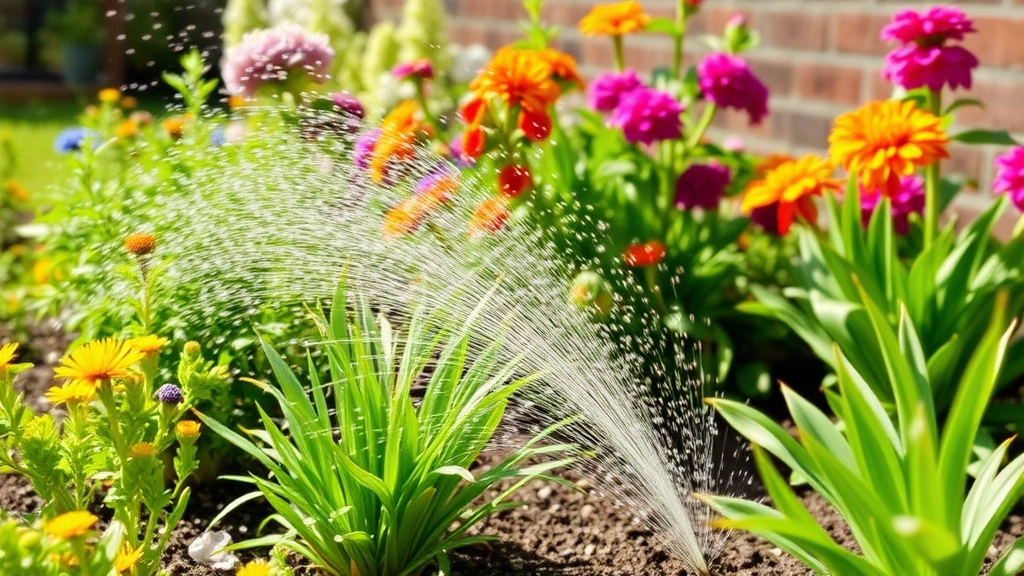
When it comes to caring for your Florist Kalanchoe White, understanding the right watering schedule is crucial. Many plant enthusiasts worry about overwatering, which can lead to root rot and other issues.
To ensure your Kalanchoe thrives, consider the following tips:
- Check the Soil Moisture: Before watering, always check the top inch of the soil. If it feels dry, it’s time to water. If it’s still moist, hold off for a few more days.
- Water Thoroughly: When you do water, ensure that you give it a good soak. Water until it drains out of the bottom of the pot. This encourages deep root growth.
- Frequency: Generally, watering every 2-3 weeks is ideal. However, this can vary based on the season and your home’s humidity levels.
- Seasonal Adjustments: During the growing season (spring and summer), your Kalanchoe may need more frequent watering. In contrast, reduce watering in the dormant season (fall and winter).
- Use Well-Draining Pots: Ensure your pot has drainage holes. This prevents excess water from sitting at the bottom, which can be detrimental to your plant’s health.
When caring for your Florist Kalanchoe White, you might be wondering about the ideal temperature and humidity levels. It’s crucial to create a comfortable environment for your plant to thrive, as improper conditions can hinder its growth and blooming ability.
### Temperature Preferences
Florist Kalanchoe White flourishes in a warm environment. Here are some key temperature guidelines:
– **Optimal Range**: Aim for temperatures between **18°C to 24°C (65°F to 75°F)** during the day.
– **Nighttime Temperatures**: At night, a slight drop to **12°C to 16°C (54°F to 60°F)** is acceptable.
– **Avoid Extremes**: Keep your plant away from cold drafts or sudden temperature changes, as this can stress the plant.
### Humidity Levels
While Kalanchoe is relatively tolerant of humidity, it still has its preferences:
– **Ideal Humidity**: A humidity level of **40% to 60%** is best for optimal growth.
– **Dry Environments**: If your home is excessively dry, consider using a humidity tray or a humidifier to maintain moisture.
– **Avoid High Humidity**: High humidity can lead to fungal diseases, so ensure good air circulation around the plant.
Maintaining the right temperature and humidity is essential for the health of your Florist Kalanchoe White. By creating a stable environment, you pave the way for lush growth and vibrant blooms. For more detailed care tips, you might find this [guide on optimal watering tips for healthy florist kalanchoe](https://planthq.org/optimal-watering-tips-for-healthy-florist-kalanchoe/) useful. Additionally, if you’re interested in exploring different varieties, check out this [guide on vibrant Kalanchoe Blossfeldiana colors](https://planthq.org/vibrant-kalanchoe-blossfeldiana-colors-a-complete-guide/).
How to Encourage Re-blooming in White Kalanchoe
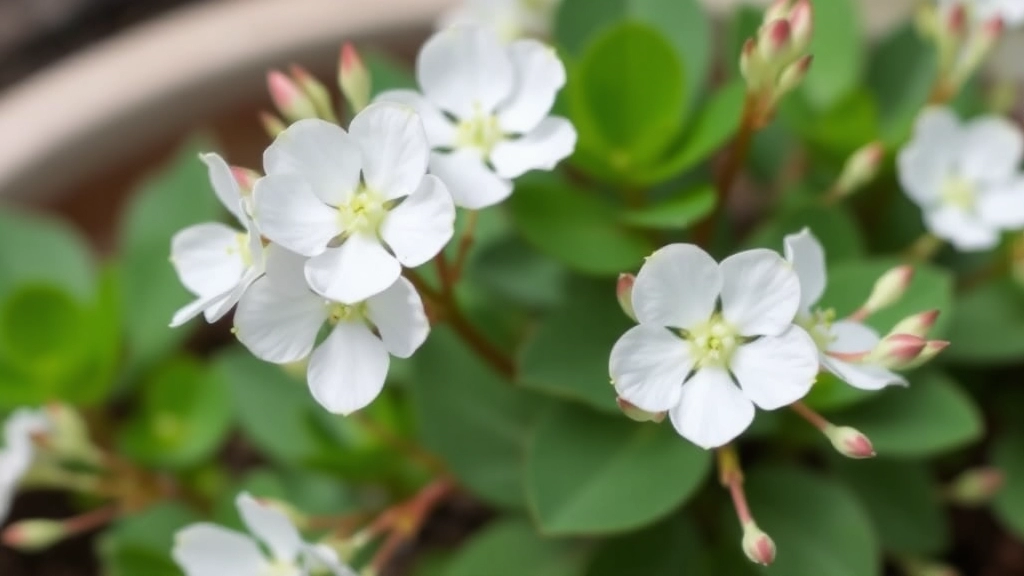
So, you’ve got your stunning White Kalanchoe, and you’re wondering how to get those beautiful blooms to come back. I feel you! It can be a bit of a puzzle, but don’t worry, I’ve got some tips to help you out.
1. Light is Key
- Bright, Indirect Light: Position your Kalanchoe where it can soak up bright, indirect sunlight. Too much direct sun can scorch those lovely leaves.
- Rotate Regularly: Give it a little twist every now and then to ensure even light exposure.
2. Pruning for New Growth
- Deadhead Flowers: As soon as those flowers start to fade, snip them off. This signals to the plant that it’s time to focus on new blooms.
- Trim Back Leaves: If the leaves start to look a bit scraggly, don’t hesitate to trim them back. It encourages fresh growth.
3. Watering Wisely
- Let it Dry: After blooming, let the soil dry out a bit more than usual before watering again. This mimics the dry season and encourages the plant to prepare for its next blooming cycle.
- Avoid Overwatering: It’s a common mistake! Keep the watering light.
4. Temperature and Fertilization
- Cooler Nights: Aim for cooler temperatures at night, around 15-18°C (59-65°F). This can help trigger blooming.
- Feed Sparingly: Use a balanced fertilizer every few weeks during the growing season, but cut back when it’s not blooming.
5. Rest Period
- Give it a Break: After the blooming period, allow your Kalanchoe a rest period of about six weeks. This helps it gather energy for the next round of flowers.
Common Pests and Diseases to Watch Out For
As we delve deeper into caring for your Florist Kalanchoe White, it’s essential to be vigilant about potential threats to its health. Pests and diseases can quickly turn a thriving plant into a sad sight, so let’s explore the common culprits you should be aware of.
Propagation Methods: Cuttings, Offsets, and Seeds
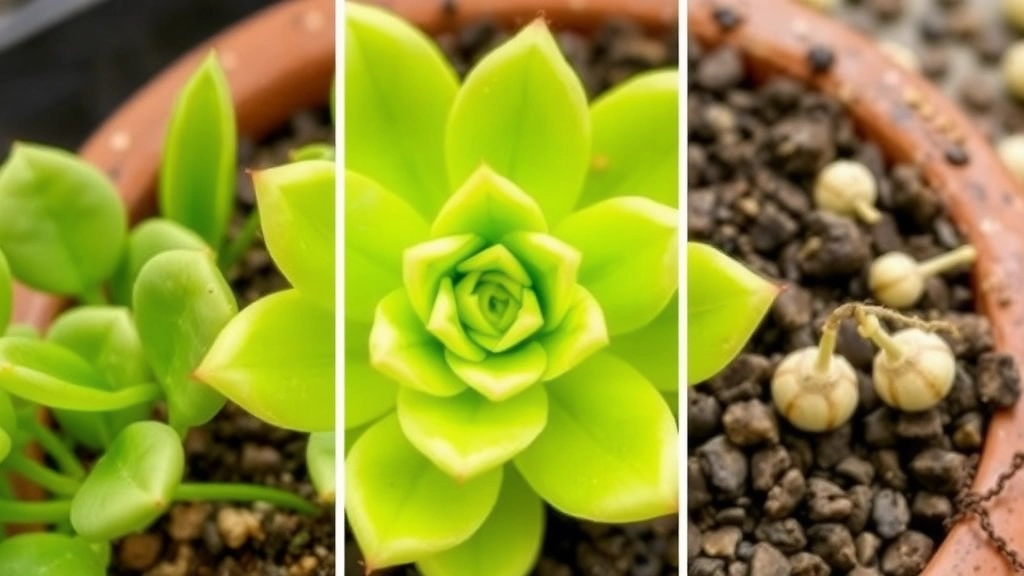
So, you’ve got a lovely Florist Kalanchoe White and you’re thinking about spreading the joy? Great idea! Propagating your Kalanchoe can be a fun and rewarding experience. Plus, it’s a fantastic way to share plants with friends or fill your own space with more of these stunning blooms.
1. Cuttings
Taking cuttings is one of the simplest methods. Here’s how to do it:
- Choose a Healthy Stem: Look for a healthy, firm stem that’s at least a few inches long.
- Make the Cut: Use clean scissors to snip the stem just below a leaf node.
- Let It Callous: Place the cutting in a dry, warm spot for a couple of days. This allows the cut end to callous over, reducing the risk of rot.
- Plant It: Once calloused, plant it in a well-draining soil mix. Water lightly.
- Wait for Roots: Keep the soil slightly moist and wait for roots to develop—this usually takes a few weeks.
2. Offsets
Offsets are little baby plants that grow at the base of the parent plant. They’re super easy to propagate:
- Identify Offsets: Look for small plants attached to the main one.
- Gently Remove: Carefully pull or cut the offset away from the parent plant.
- Plant in Soil: Place it in a pot with a good soil mix and water lightly.
3. Seeds
While not as common for Kalanchoe, you can also propagate from seeds:
- Collect Seeds: If your plant has flowered, you might see seed pods. Wait for them to dry before collecting seeds.
- Sow Seeds: Sprinkle them on the surface of a seed-starting mix and lightly cover them with soil.
- Keep Moist: Mist the soil to keep it moist but not soggy. Cover with plastic to maintain humidity.
- Germination: Once they sprout, remove the cover and care for them like young plants.
Propagation is a fantastic way to expand your collection or share with friends. It’s also a great way to connect with your plant and learn more about its needs.
As you nurture your Florist Kalanchoe White, understanding seasonal care is key to ensuring its vibrant blooms and overall health.
### Spring Care
– **Repotting**: Spring is the perfect time to repot your Kalanchoe. Choose a pot that is slightly larger and refresh the soil.
– **Fertilisation**: Start a regular fertilisation schedule. Use a balanced, water-soluble fertiliser every four to six weeks.
– **Light Adjustment**: As days get longer, ensure your plant receives ample sunlight, ideally around 6 hours of indirect light.
### Summer Care
– **Watering**: Increase your watering frequency as temperatures rise, but ensure the soil dries out between sessions.
– **Humidity Control**: While Kalanchoes prefer low humidity, monitor for any signs of stress. If necessary, mist the plant occasionally.
– **Pest Watch**: Keep an eye out for pests like aphids or mealybugs, which can thrive in warm weather.
### Autumn Care
– **Reduce Watering**: As temperatures drop, reduce your watering schedule to prevent root rot.
– **Pruning**: Trim back any dead or wilting leaves to encourage new growth.
– **Light Management**: As daylight decreases, ensure your plant still receives adequate light, possibly moving it closer to a window.
### Winter Care
– **Temperature Monitoring**: Kalanchoes thrive in temperatures between 15°C to 25°C. Protect them from drafts and extreme cold.
– **Minimal Watering**: Water sparingly, allowing the soil to dry out completely between sessions.
– **Fertilisation Pause**: Suspend fertilisation during the winter months, as the plant’s growth slows down.
For more detailed information on [optimal watering tips for healthy Florist Kalanchoe](https://planthq.org/optimal-watering-tips-for-healthy-florist-kalanchoe/) and [essential care tips for Kalanchoe Blossfeldiana](https://planthq.org/florist-kalanchoe-plant-care-essential-tips-for-healthy-growth/), you can visit our guides.
Troubleshooting Common Care Issues for Florist Kalanchoe White
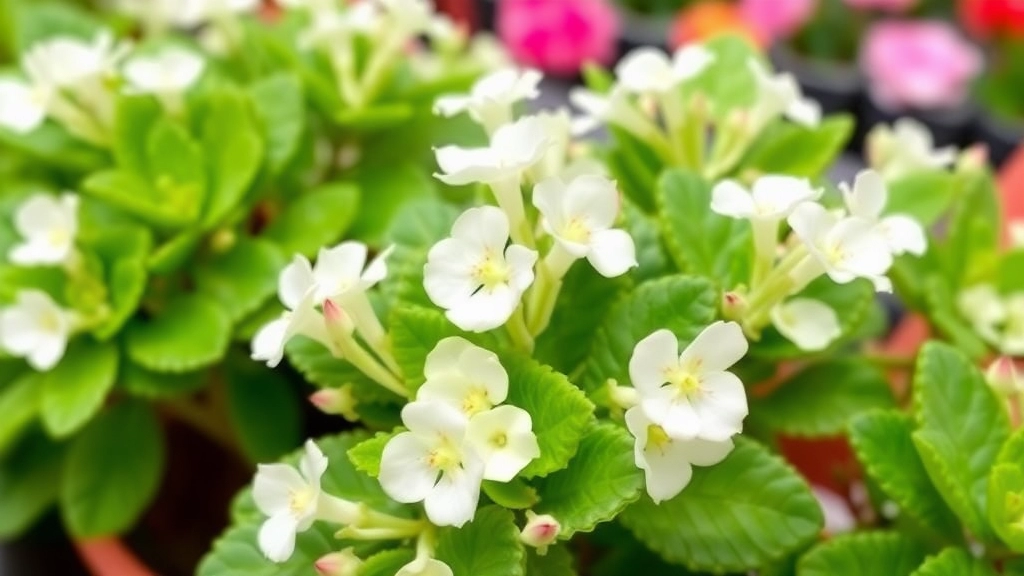
So, you’ve got your beautiful Florist Kalanchoe White, but things aren’t going quite as planned? Don’t worry; you’re not alone! Many of us face challenges with our beloved plants. Let’s dive into some common care issues and how to tackle them head-on.
Yellowing Leaves
What’s Happening?
Yellow leaves can be a sign of overwatering or poor drainage.
Quick Fixes:
- Check the soil: If it’s soggy, hold off on watering for a bit.
- Ensure your pot has drainage holes to prevent water from pooling.
Dropping Leaves
Why Is This Happening?
Dropping leaves often means your plant is stressed, possibly from sudden temperature changes or too much direct sunlight.
Solutions:
- Move your Kalanchoe to a more stable environment.
- Avoid placing it near drafty windows or heating vents.
Stunted Growth
Feeling Frustrated?
If your Kalanchoe isn’t growing as expected, it might be lacking nutrients.
What to Do:
- Feed with a diluted, balanced fertilizer every couple of months during the growing season.
- Ensure it’s in the right-sized pot; a pot that’s too small can stunt growth.
Pests and Diseases
Worried About Pests?
Spider mites and mealybugs can sneak in and wreak havoc.
How to Handle It:
- Regularly inspect your plant for pests.
- If you spot any, wipe them off with a damp cloth or use insecticidal soap.
Wilting
What’s Going On?
Wilting can indicate both under-watering and over-watering.
Check This:
- If the soil feels dry, give it a drink.
- If it’s wet and the leaves are droopy, let it dry out before watering again.
Fading Flowers
Noticing Faded Blooms?
This might happen if your Kalanchoe isn’t getting enough light.
Tip:
- Move it to a brighter spot, but avoid harsh direct sunlight that can scorch the leaves.
Creative Decorative Uses for Florist Kalanchoe White
As we’ve explored the care and maintenance of your Florist Kalanchoe White, you may be wondering how to showcase this stunning plant in your home or garden.
Indoor Decor Ideas
- Table Centerpieces
Place your Kalanchoe in a decorative pot and use it as a striking centerpiece for dining or coffee tables. The white blooms add elegance and freshness to any setting. - Windowsill Displays
Position your Kalanchoe on a windowsill where it can soak up sunlight. This not only highlights its beauty but also brings a touch of nature indoors. - Shelving Arrangements
Incorporate Kalanchoe into your shelving units. Pair it with books or other decorative items for a balanced look.
Outdoor Decor Ideas
- Garden Borders
Plant your Kalanchoe along garden borders. Their vibrant white flowers create a lovely contrast against green foliage. - Patio Planters
Use Kalanchoe in patio planters to brighten up outdoor spaces. They thrive in sunlight, making them perfect for brightening up balconies or patios. - Hanging Baskets
Consider using Kalanchoe in hanging baskets. This can create a cascading effect, adding dimension to your outdoor decor.
Seasonal Arrangements
- Spring Displays
Combine Kalanchoe with other spring flowers for a vibrant arrangement. The white blooms can complement pastel colours beautifully. - Holiday Decor
Use Kalanchoe as part of your holiday decorations. Its white flowers can enhance festive themes, especially during winter.
Additional Tips
- Mixing Textures
Pair Kalanchoe with plants of different textures and colours for a dynamic display. - Themed Arrangements
Create themed arrangements based on seasons or occasions, using Kalanchoe as a focal point.
FAQs on Florist Kalanchoe White Care
What type of soil is best for Florist Kalanchoe White?
The ideal soil mix for Florist Kalanchoe White should be well-draining. A cactus or succulent mix works wonders, or you can create a DIY mix using 2 parts potting soil, 1 part perlite or coarse sand, and 1 part orchid bark. The pH level should be slightly acidic to neutral (around 6.0 to 7.0).
How often should I water my Florist Kalanchoe White?
Watering every 2-3 weeks is generally ideal. Always check the top inch of the soil before watering; if it feels dry, it’s time to water. Ensure your pot has drainage holes to prevent overwatering.
How can I encourage my Florist Kalanchoe White to re-bloom?
To encourage re-blooming, provide bright, indirect light, prune dead flowers and scraggly leaves, and let the soil dry out a bit more than usual after blooming. Cooler night temperatures and balanced fertilization during the growing season also help.
What are the best methods for propagating Florist Kalanchoe White?
You can propagate Florist Kalanchoe White through cuttings, offsets, or seeds. Cuttings involve snipping a healthy stem and letting it callous before planting. Offsets are small plants that grow at the base of the parent plant and can be easily separated and planted. Seeds can be collected from dried seed pods and sown in a seed-starting mix.
Why are the leaves on my Florist Kalanchoe White turning yellow?
Yellowing leaves often indicate overwatering or poor drainage. Check the soil moisture and ensure your pot has drainage holes to prevent water from pooling.
Why is my Florist Kalanchoe White dropping leaves?
Dropping leaves can be a sign of stress, possibly from sudden temperature changes or too much direct sunlight. Move your plant to a more stable environment away from drafty windows or heating vents.
What should I do if my Florist Kalanchoe White has stunted growth?
Stunted growth may indicate a lack of nutrients. Feed your plant with a diluted, balanced fertilizer every couple of months during the growing season. Ensure it’s in the right-sized pot, as a pot that’s too small can stunt growth.
How can I deal with pests on my Florist Kalanchoe White?
Regularly inspect your plant for pests like spider mites and mealybugs. If you spot any, wipe them off with a damp cloth or use insecticidal soap.
What does it mean if my Florist Kalanchoe White is wilting?
Wilting can indicate both under-watering and over-watering. If the soil feels dry, water your plant. If it’s wet and the leaves are droopy, let it dry out before watering again.
Why are the flowers on my Florist Kalanchoe White fading?
Fading flowers may indicate insufficient light. Move your plant to a brighter spot, but avoid harsh direct sunlight that can scorch the leaves.
References
-
Kalanchoe Plant Care: Learn How To Grow Kalanchoe Plants
-
How to Grow Kalanchoe Indoors
-
Kalanchoe: How to Grow and Care for Kalanchoe
